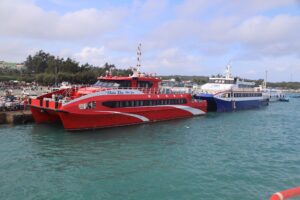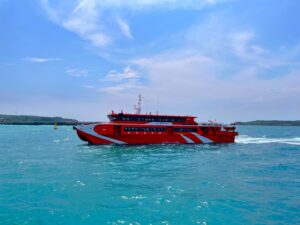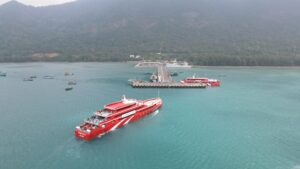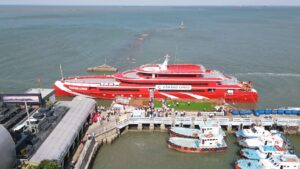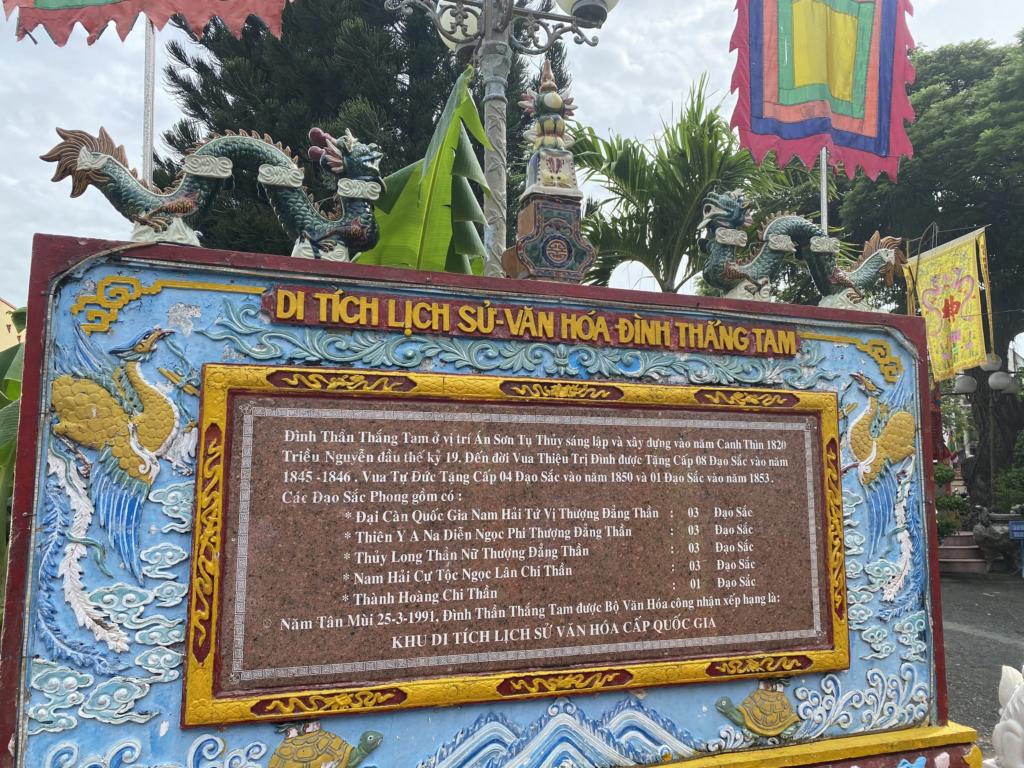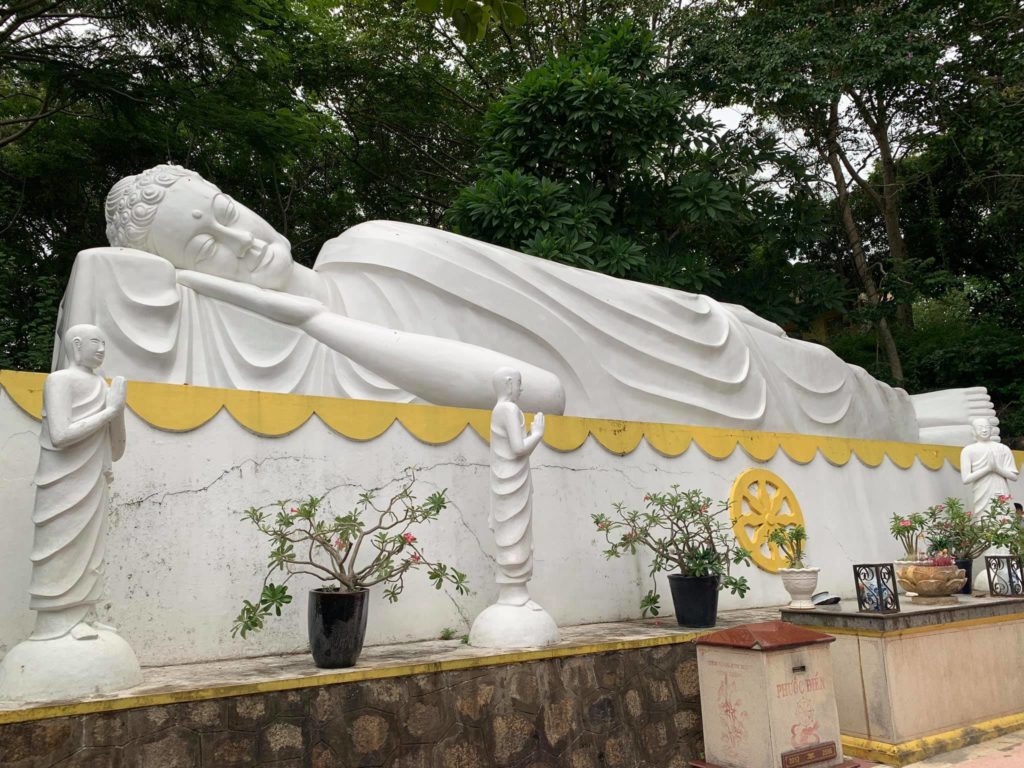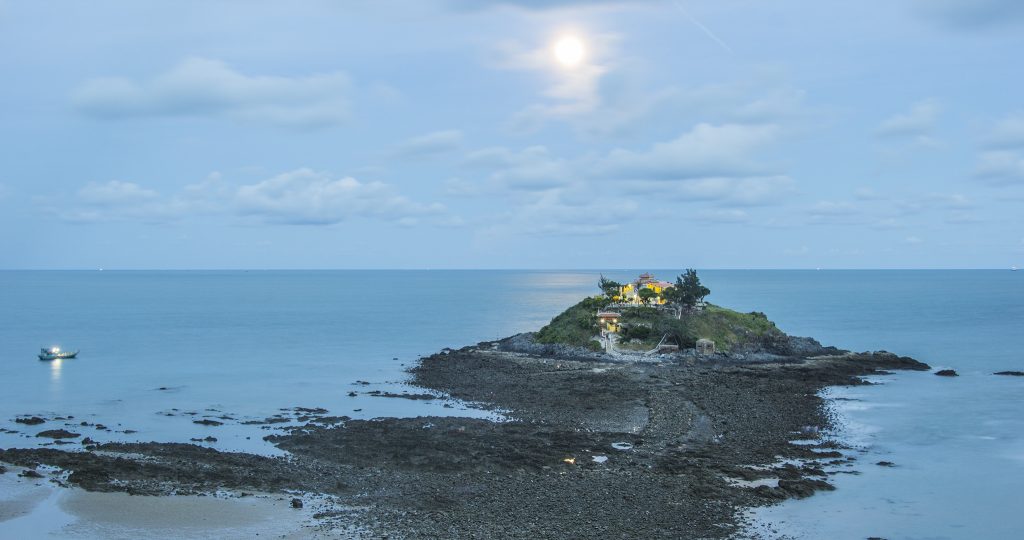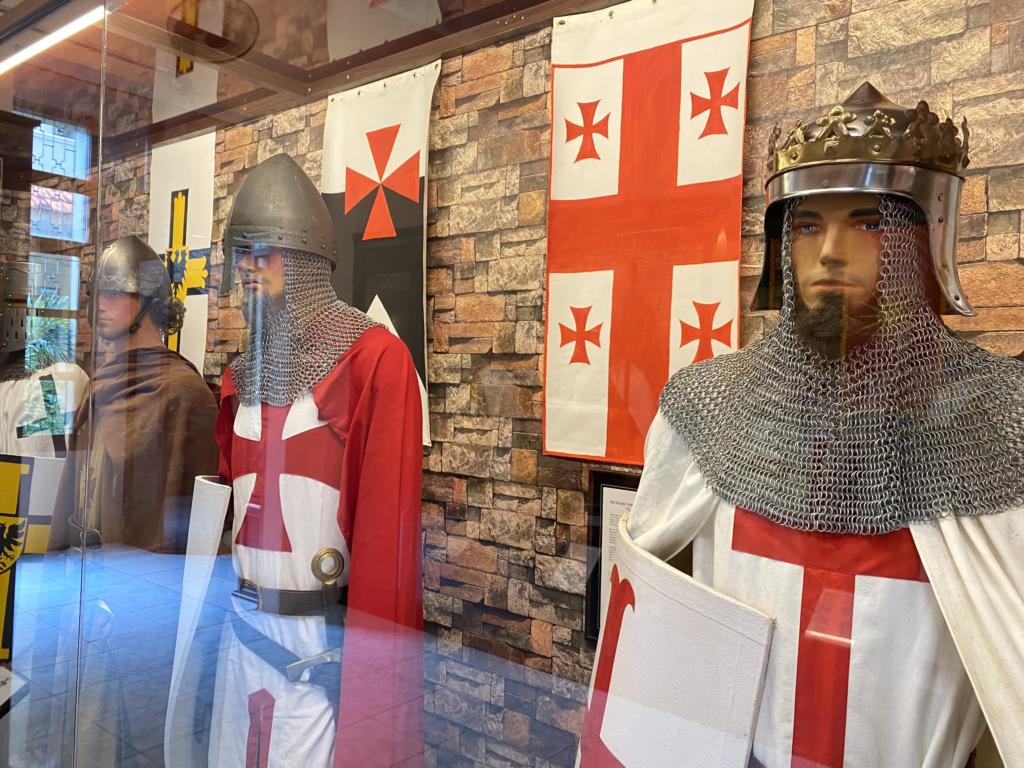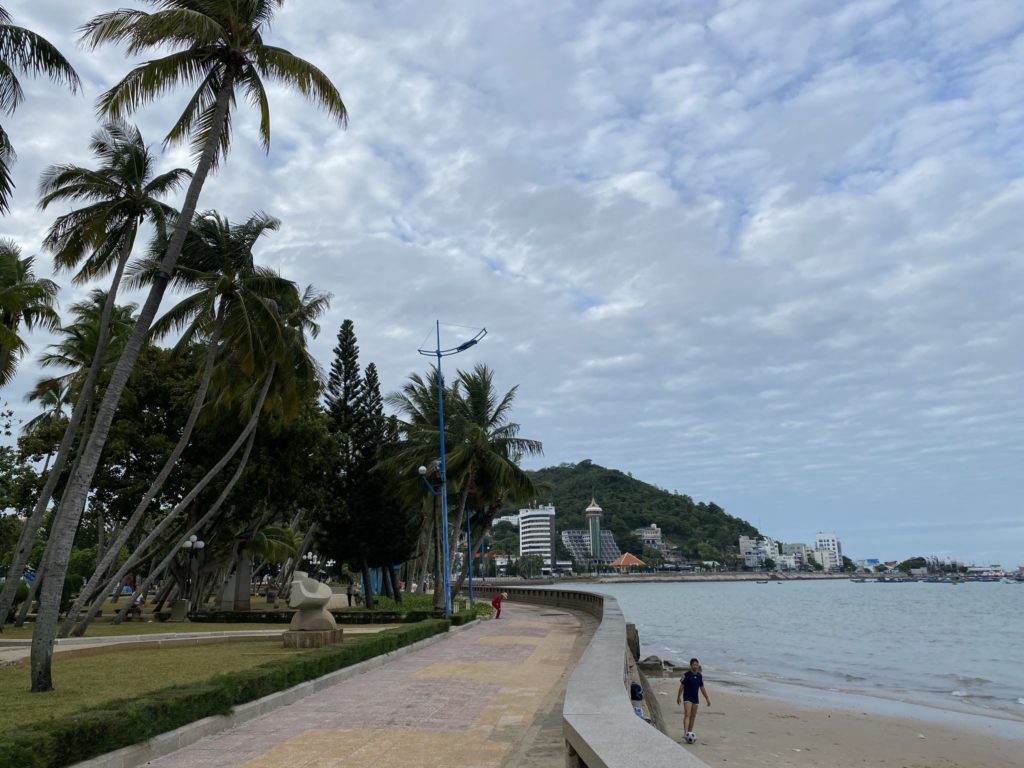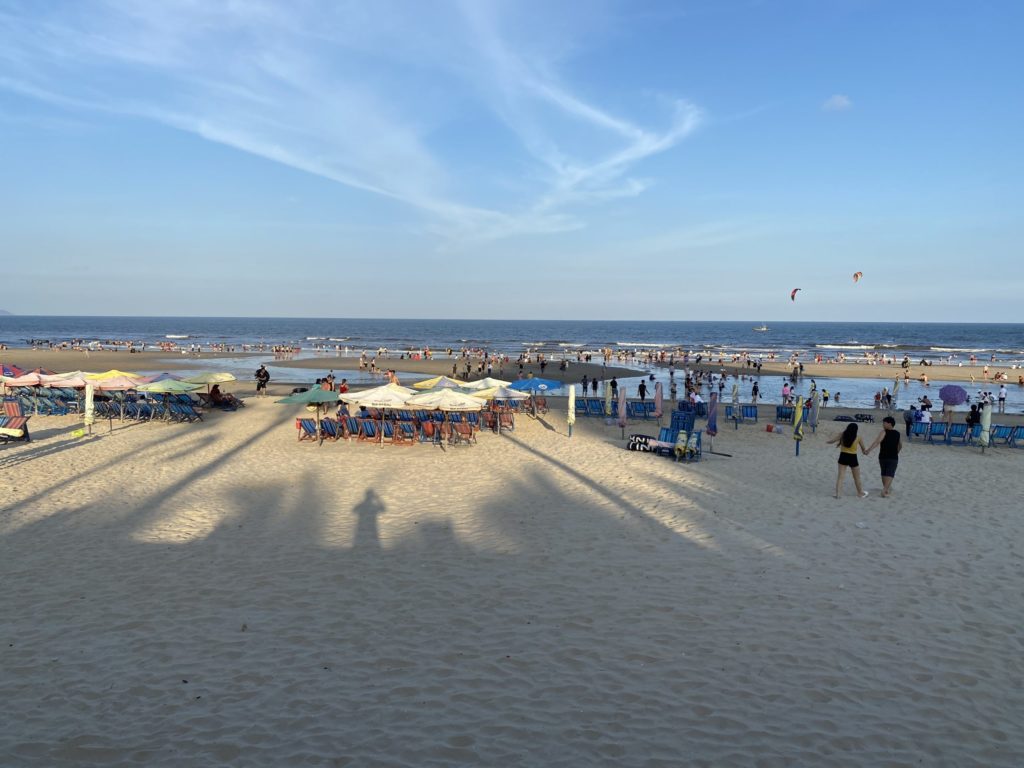In ancient Vietnamese culture, there was usually a holy temple in every village to worship the village guardian who helped protect the local people from super-natural forces and their enemies.
The village temple was also a place where various cultural and religious activities took place.
Over the years, due to historical changes, many such temples no longer exist. Fortunately, in the modern city of Vung Tau, there are still some old temples which are well preserved. The Thang Tam temple, for instance, is one of the temples that not only has the most common features as other temples but also represents the unique characteristics of the local people.
The Thang Tam’s Holy Temple was built in the time of Minh Mang Dynasty to worship three men who contributed to the establishment of the first three villages in Vung Tau. As legend goes, under the reign of king Gia Long, when Malay pirates built a base in Vung Tau and subsequently became a danger to traders in Gia Dinh city ( now Saigon), the king sent 3 army companies led by Pham Van Dinh, Le Van Loc and Ngo Van Huyen to crack down on the pirates. The pirates were ousted. The three leaders and their troupes were given the land of Vung Tau as a reward. The men decided to split the land into three villages named Thang Nhat (First village) administered by Mr. Pham Van Dinh, Thang Nhi ( Second village) administered by Mr. Le Van Loc and Thang Tam administered by Mr. Ngo Van Huyen. Today, these three men are worshipped in the temples of the three villages.
In addition to its historical and cultural values, the Thang Tam’s Holy Temple keeps and maintains festivals that colorfully show national characters and traditions. Annually, the temple festival formally takes place from 17th to 20th of the second month in the lunar calendar
The Whale Tomb
Lying on the right of the Thang Tam’s Holy Temple, the Whale Tomb was built at the same time as the Temple of the Five Eliments at the end of the 19th century. The Tomb presently displays a huge skeleton of a whale collected by the local fishermen over a hundred years ago .
In the story about the whale, it was rumoured that in the mid 19th century, there was a very big head of a whale drifting onto the Tam Duong Beach. The whale head was so big that local villagers had to fence it with bamboo sticks and waited several days for the whale flesh to become rotten enough to leave the bones. Then they carried the bones to the temple and people have worshipped until today. Over recent years, more whale bones have been collected and preserved at the temple
According to local fishermen, the first person to see a dead whale is considered as the firstborn of that whale. He or she has to hold a funeral and wear a morning head-band during the whale service as if they were the offspring of the whale.
The “South China Sea General” festival – This title was conferred on the whale by King Thieu Tri, is held annually on the same days the whale was spotted from 16th to 18th of the Lunar August. The ritual includes making offeing to the whale; welcoming the whale accompanied by a parade of colorfully decorated boats at nights. In addition, the worship and offering to the village Guardian and Gods is also seen as a part of the whale festival. These festival days attract a great number of local people and tourists who come not only to pray for health, luck and happiness but to enjoy many fascinating religious and cultural activites taking place in and outside the temple.
Temple of the Five Elements
Lying on the left of the Thang Tam’s Holy Temple is the Temple of the Five Elements. It is said that the temple was built by the Thang Tam fishermen at the end of the 19th century to worship the five basic eliments known as metal, wood, water, fire and earth. Besides, this temple also worships the Goddess Poh Nagar (the Vietnamese call Thien Y A Na) and the Sea Goddess
Annually, the temple festival is held from 16th to 18th of lunar October. The festival is a very vivid and colourful event including offerings to gods, a unicorn dance, folk games and singing. Being known as a sacred place, the temple festival days attracts hundreds of pilgrims through out the country. Obviously, the temple and its festival represents the culture and characteristics of the marine life of the local residents.

